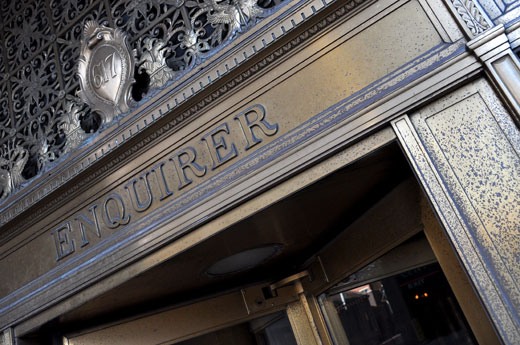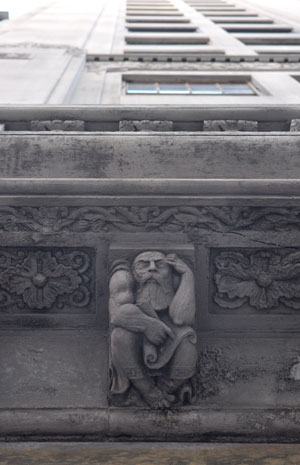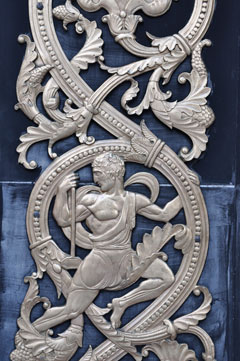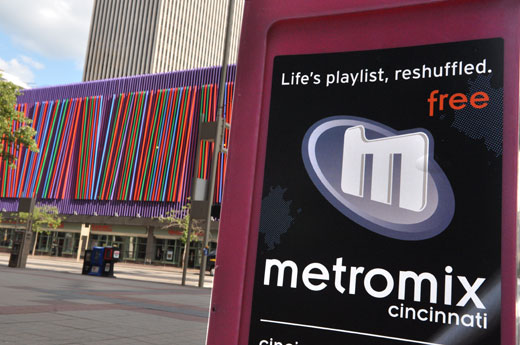Soapdish: Now IS the Time
Brilliance.

 Notwithstanding my role as a regular contributor to Soapbox, and at the risk of coming off like an Andy Rooney manqué, I have always been a “newspaper person” (and I would note that these interests are not mutually exclusive). From an early age reading the morning papers in the school library before class, devouring the Washington Post and New York Times during college and grad schools, and throughout my adult life, I have always been a hard core “subscriber” to the ink-stained newspaper diet. When we moved to Cincinnati, unadorned by preexisting media baggage, I quickly signed up for an Enquirer subscription, blissfully unaware of the respective merits or drawbacks of the paper. While recognizing that the true “paper of record” (i.e. the New York Times) is the ne plus ultra of newspapers, one needs to balance the hefty veritas of the “Grey Lady” with the more parochial offerings of the region, offerings from which the local color and tenor can be gleaned. The Enquirer has been dishing up local color and tenor in Cincinnati for 168 years, and hopefully will continue to do so for at least another 168.
Notwithstanding my role as a regular contributor to Soapbox, and at the risk of coming off like an Andy Rooney manqué, I have always been a “newspaper person” (and I would note that these interests are not mutually exclusive). From an early age reading the morning papers in the school library before class, devouring the Washington Post and New York Times during college and grad schools, and throughout my adult life, I have always been a hard core “subscriber” to the ink-stained newspaper diet. When we moved to Cincinnati, unadorned by preexisting media baggage, I quickly signed up for an Enquirer subscription, blissfully unaware of the respective merits or drawbacks of the paper. While recognizing that the true “paper of record” (i.e. the New York Times) is the ne plus ultra of newspapers, one needs to balance the hefty veritas of the “Grey Lady” with the more parochial offerings of the region, offerings from which the local color and tenor can be gleaned. The Enquirer has been dishing up local color and tenor in Cincinnati for 168 years, and hopefully will continue to do so for at least another 168.
 While some may disagree with the editorial direction of the paper, there can be no denying that it is a critical component of our local media landscape. There is simply something visceral, tangible and fulfilling about a local, morning newspaper that a virtual online site cannot replicate. The ink-smeared walls and banisters of my house are a testament to that.
While some may disagree with the editorial direction of the paper, there can be no denying that it is a critical component of our local media landscape. There is simply something visceral, tangible and fulfilling about a local, morning newspaper that a virtual online site cannot replicate. The ink-smeared walls and banisters of my house are a testament to that.
That said, however, it’s been a rough couple of weeks, months and year for the listing local paper of record. A number of staff reductions occurred during the latter portion of last year, and more were rumored to be coming down from on high Mt. Gannett during the first week of July. Over the course of several days, beginning around July 7, a torrent of cyber-handwringing virtually exploded over the internet as the Enquirer laid off 101 employees, including the entire staff of CinWeekly. Exhibiting an out-of-touch and anachronistic manner more befitting of an increasingly irrelevant publication, the paper’s top brass struggled to keep up with the successive waves of cathartic caterwauling splashing across the internet, as blogs and Twitter feeds published lists of terminated employees before the paper even got around to telling them. Even worse, the paper remained inexplicably mute, sphinx-like, as the entire process unfolded.
It is unfortunate that the Enquirer, for now at least, seems to have lost its way in an increasingly internet media world. Its revamped website, rolled out a few years back to much internal acclaim (and external derision), remains an absolutely clunky abomination. Its attempt to capture the young professional demographic (the “whYPes”), while admirable, is undercut in part by the wholesale evisceration of CinWeekly.
More critically, however, while paying lip service to whYPe interests with “party” coverage and online photo albums, the Enquirer editorial slant seems to take a decided bent away from the interests of the whYPes. As if trying to have their cake and eat it too, the Enquirer’s bi-polar difficulties stem from its kowtowing to the readership and advertising dollars of the sprawlburbs and hinterlands of Warren, Butler, Clermont Counties and beyond, most of whom have a decided disinterest in the workings of the urban core as evidenced in the letters and comments sent to the Enquirer).
 No subject epitomizes this disturbing dichotomy more than the Enquirer’s coverage of the ongoing debate over the proposed Cincinnati streetcar system, and, by implication, the anti-rail charter amendment being foisted upon the city by the anti-streetcar cabal. By any stretch of the imagination, the streetcar is a project geared toward attracting numerous demographics and investment) to the city proper, not the least of which are the whYPes, the creative class, the urbanista city dwellers and gentrifiers that the city so desperately needs to attract.
No subject epitomizes this disturbing dichotomy more than the Enquirer’s coverage of the ongoing debate over the proposed Cincinnati streetcar system, and, by implication, the anti-rail charter amendment being foisted upon the city by the anti-streetcar cabal. By any stretch of the imagination, the streetcar is a project geared toward attracting numerous demographics and investment) to the city proper, not the least of which are the whYPes, the creative class, the urbanista city dwellers and gentrifiers that the city so desperately needs to attract.
Not unlike the Banks project, the streetcar is a bold and risky stroke in a time of economic downturn, just as the Federally-funded WPA was during the Great Depression – without which we would not have, among many attributes, the impressive city park system in place today. In its editorial last Friday, exemplifying a level of courage from which the Enquirer apparently shrinks, the Cincinnati Business Courier emphasized this very point, noting that “[s]ure, the economy is generally burnt toast right now – but history tells us that some of the most important companies, inventions and decisions were made during great economic strife. The Cincinnati streetcar should join that list.”
By contrast, in a recent Sunday editorial, following several weeks of coverage that many streetcar proponents considered decidedly negative, the Enquirer opined from on high with a meek-kneed and backhanded slap at the streetcar proposal, declaring,“This is not the time for Cincinnati to be pouring its energy, resources and political capital into a streetcar project.”
For many, this was the last straw.  Such a head-in-the-sand proclamation was truly remarkable in its almost vintage 1950’s-era myopic vision, doggedly refusing to lead Cincinnati into the future, but instead retreating to the safe confines of the shopworn cliché known as “same old Cincinnati.” Following the departure of editorial page editor David Wells, many in the local community saw the recent editorial as an extremely disappointing riposte regarding the future direction of the Enquirer. As streetcar supporter Don Mooney put it in the Enquirer’s “Other Voices” column, “[I]f the Enquirer was writing like this 40 years ago, we would have put the moon walk on hold because we had more important priorities.”
Such a head-in-the-sand proclamation was truly remarkable in its almost vintage 1950’s-era myopic vision, doggedly refusing to lead Cincinnati into the future, but instead retreating to the safe confines of the shopworn cliché known as “same old Cincinnati.” Following the departure of editorial page editor David Wells, many in the local community saw the recent editorial as an extremely disappointing riposte regarding the future direction of the Enquirer. As streetcar supporter Don Mooney put it in the Enquirer’s “Other Voices” column, “[I]f the Enquirer was writing like this 40 years ago, we would have put the moon walk on hold because we had more important priorities.”
It is truly unfortunate that the Enquirer has chosen to forsake a path to the future by instead appealing to the base, conservative retreads of the past. Sadly enough, it is certainly much easier and politically safe to say “now is not the time.” The stance of the editorial unfortunately brings to life a popular quote usually attributed to Mark Twain: “When the end of the world comes, I want to be in Cincinnati because it’s always twenty years behind the times.” Unfortunately, the Enquirer has once again exhibited the hallmark of an increasingly out-of-touch and anachronistic institution, dialing up the way back machine for Twain’s requisite 20 year journey.
In 1929 Cincinnati effectively abandoned its unfinished subway in the face of rising litigation and the stock market crash. Then, as now, the detractors pointed to the surrounding turmoil and argued that “now is not the time.” As the Enquirer seeks to find its way in the future, one can only hope for a more progressive and visionary editorial voice. To do otherwise is akin to aligning oneself with the buggy whip manufacturers and barrel-makers of ‘29 as the rest of the country passes us by on their federally-funded high speed rail and streetcar systems of the future. Newspaper people like myself, and the community as a whole, would most assuredly suffer as a result.
 Looking forward to better work in tomorrow’s paper.
Looking forward to better work in tomorrow’s paper.














